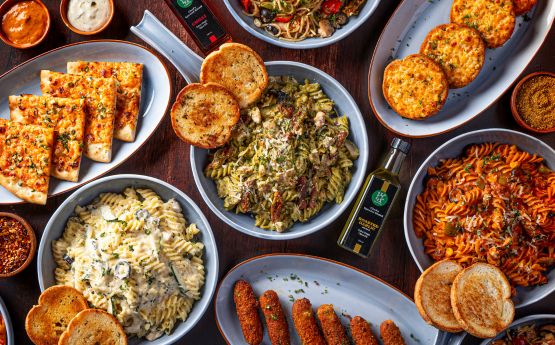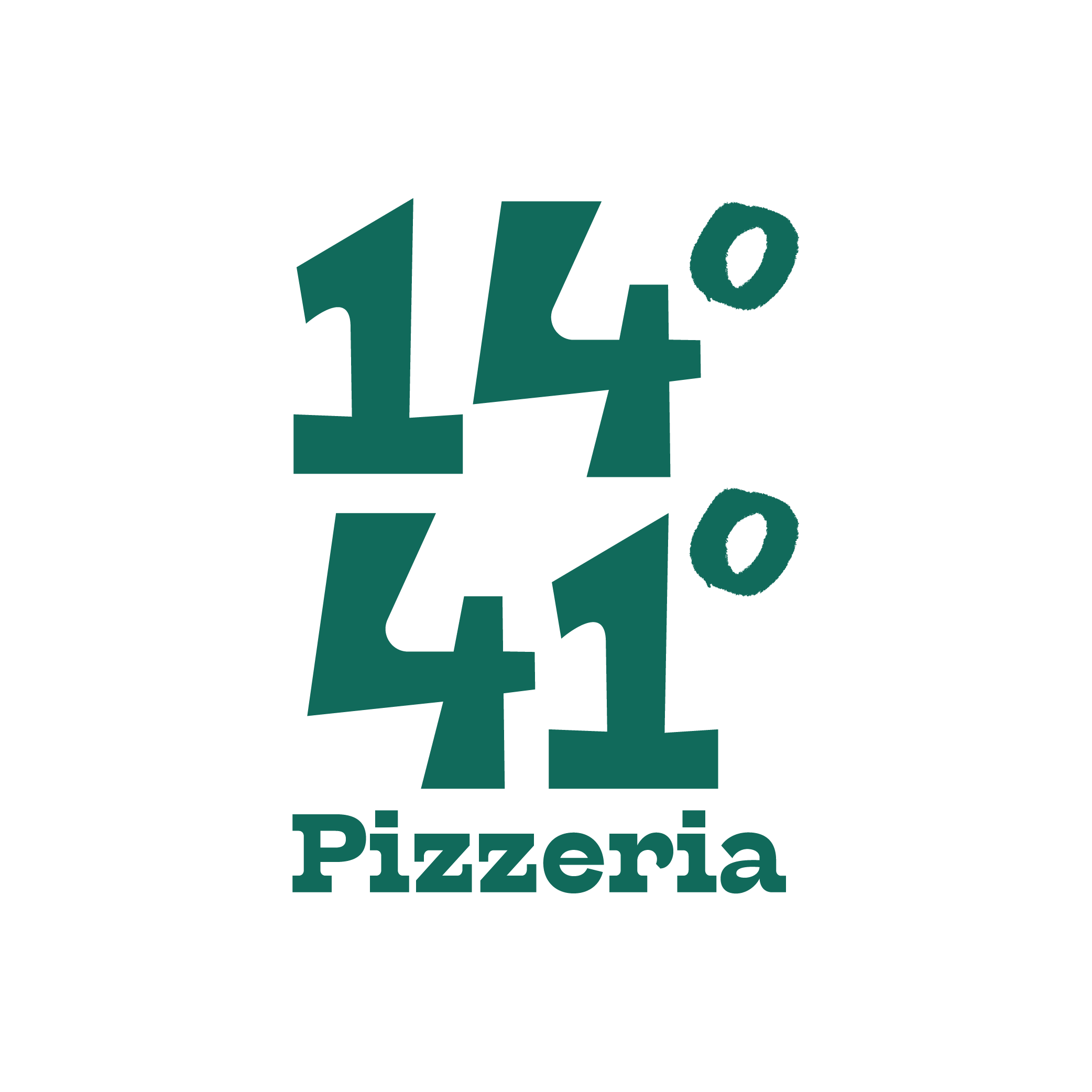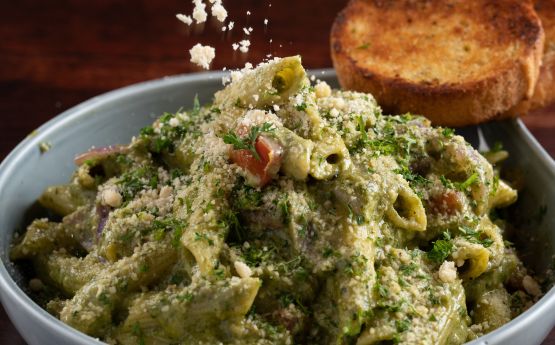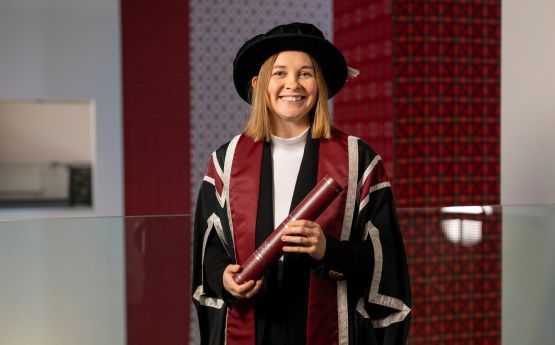Hansraj Halan - CEO of 14°14° restaurant
MBA, Class of 2014

Hansraj Halan. MBA, Class of 2014
As an international student from India, what influenced your decision to study at Swansea University?
I wanted to learn about life in a much more practical way. I was looking at universities everywhere, however it was Swansea that grabbed my attention. Swansea was one of the most peaceful places to be. I wanted to understand the values and culture of the place I would be living in. So, instead of taking student accommodation, I took a private rental. It helped me learn more about the culture in Swansea. I also used to work in the stadium, which allowed me to get closer to local people and it taught me how to interact with other people. I believe the key to a successful life is to know how to develop relationships with other people. It's to talk to people and be comfortable talking to people. Swansea was the best place for me.
Would you recommend Swansea to other international students?
100%. I have already recommended more than about 20-30 people to go to Swansea. There are a lot of talented students in India who want the experience of studying abroad and I encourage them to do it. Swansea, being one of the best universities in the world, gave me an excellent degree and exposure to a different culture and way of life. When I was in Swansea, I was very active, playing basketball, working with other people, focusing on my studies, etc. I even participated in a business competition in Swansea, and I was awarded the ‘best entrepreneur’ award.

This helped me to secure a working visa to stay in the UK for a few years, however, I didn't take it as I was keen to return to India and set up a business. I feel, if you want to work in a business in the United Kingdom, it’s very good, but if you want to start a business it’s much easier in India.
How did the Indian food here compare with the the food back home in Mumbai.
There is no comparison, and I say that with no hatred. Most so-called Indian restaurants in the UK are not actually Indian restaurants. They are mainly owned by Bangladeshis. For us as Indians, we can understand the nuances in our cuisine, but it becomes a little more difficult for other people to understand.
How did how did you adjust to the difference in food?
To be honest, you'll have to come to India to taste the food. I love Indian food. I am a man who loves spices and masala and tikka and things. I'm 100% vegetarian, however, there wasn’t an option to have it while I was in Swansea.
Did you find it a shock when you came to Swansea, and you had to experience British food for the first time.
Well, not really. To be honest, I used to go back to India twice a year for food, but I also wanted to learn about the culture in Swansea and the UK. I wanted to learn and taste the food and then understand it, so it was not a shock. It was good. One of my favourite things about Swansea when it comes to food was eating chips with curry sauce and cheese. I used to really enjoy that. I don't remember where exactly I used to have it but it was something that I enjoyed very much.

Given your love for Indian cuisine, what led you to open a pizza restaurant?
I’ve always had a deep appreciation for Indian cuisine, its bold flavours, rich traditions, and the way it brings people together. But at the same time, I’ve been equally fascinated by global culinary experiences. One of the turning points for me was during my time in Swansea, where I tried an authentic wood-fired pizza with a thin crust. I absolutely loved it. The simplicity, the balance of flavours, and the lightness of the crust stood out especially when compared to the heavier, cheesy versions commonly found back in India. That experience really stuck with me. What drew me to open a pizzeria was the opportunity to bring that authenticity to India, blending global appeal with true craftsmanship. Italian pizza, when made the traditional way using a wood-fired oven, imported San Marzano tomatoes, and Italian flour, offers a purity of flavours and artistry that deeply resonated with me.
With 14°41° Pizzeria, we didn’t want to just serve pizza; we wanted to create an experience rooted in authenticity but also open to innovation. We’ve even infused Indian influences into some of our offerings, creating a menu that celebrates both worlds.
The business is called 14°41° Pizza. Where did the name come from?
The name 14°41° comes from the geographical coordinates of Naples, Italy -14 degrees East and 41 degrees North. Naples is considered the birthplace of authentic pizzas, and we wanted our name to reflect that heritage. It’s a tribute to where it all began and a reminder of our commitment to staying true to traditional, wood-fired Italian pizza, made with ingredients like imported Italian flour and San Marzano tomatoes.
What were some of the early challenges in setting up Pizza 14°41°.
One of the biggest early challenges was introducing people to the concept of authentic, wood-fired pizza. Back when we started, most customers were used to thick-crust, cheese-heavy pizzas from commercial chains. Explaining the difference and the value of a thin, hand-stretched, wood-fired pizza made with imported Italian flour and fresh ingredients took time and effort.
Another challenge was sourcing the right ingredients. We were committed to using San
Marzano tomatoes and Italian flour to maintain authenticity but setting up a reliable supply chain for consistent quality wasn’t easy. Even our oven was brought in from Italy. It weighs around 500 kilos and had to be assembled on-site by a specialist technician. That alone was a huge logistical task.
We also put a lot of thought into our kitchen design. Traditional restaurants often have closed kitchens, but we wanted to build trust and transparency, so we went for a fully open kitchen where customers can see how their food is prepared. That helped build confidence in our hygiene and quality.
Delivery was another major hurdle. Our pizzas are delicate, and Indian road conditions made it tough to ensure they arrived in perfect shape. But over time, we figured out solutions that helped maintain the quality during transit. Initially, we served around 500 customers a month. Today, we serve 500 a day.

Regarding the pizzas, how do you balance tradition and innovation?
Our foundation is built on authenticity, but we always keep in mind where we are located and what our customers like. Food trends are constantly evolving, and so are the preferences of our customers. That’s why we make it a point to stay in tune with emerging trends and, more importantly, maintain regular conversations with our staff; they’re the ones engaging with customers daily and bring invaluable insights to the table. These discussions help us understand what people are looking for, whether it’s healthier options, bold local flavours, or something entirely new.
To bring an Indian punch to our pizzas, we’ve introduced tandoori varieties, adding that unique, spicy twist. We also created our ‘Cheeseless Wonders’ range, designed for health-conscious customers seeking lighter options. These pizzas are crafted with the same level of authenticity and balance we’ve always maintained. So, while we never stray from traditional pizza-making processes, we continue to experiment with toppings and formats, keeping things exciting and relevant for our customers.
What is your proudest achievement?
My proudest achievement is yet to come.
Outside of the pizza business, what else are you involved in?
Within this last two years, I've joined my family business. The family business is mainly purchasing and selling land and trading in share market and finance. I take care of the finance business and the real estate part of it, buying land and selling land. One of my personal projects is in Lonavala, a kind of hill station, about 200 kilometres from here (Mumbai) wherein we build and sell villas. The project consists of 25 bungalows in the first phase. They’ve all been sold now so we will be moving to the second phase soon.
Back to pizzas, what is your favourite pizza toping?
If I had to pick a favourite pizza topping, it would be caramelized onions. There’s something about the sweetness and depth of flavour they add that really elevates the pizza. I also love sun-dried tomatoes—they are enriched with a delicious tang that pairs perfectly with the richness of the other ingredients. I’m a big fan of truffle oil as well—it adds such a unique, aromatic flavour that I really enjoy on pizzas.
What about things like Pepperoni on pizzas? Does that go down well?
I’m a vegetarian myself, so I tend to gravitate towards veggie pizzas, but I do see that our customers love the non-veg options! In fact, about 70% of the pizzas ordered at my outlet are salami and other non-veg varieties, with the remaining 30% being vegetarian. As for toppings like pepperoni, they go down well! We only serve chicken at our outlet, so even our pepperoni is made with chicken. It goes well and gives the pizza that perfect balance of salty, savoury flavours, which our customers absolutely love.
Joe's ice cream or Verdi's ice cream. Did you go to Joe's and Verdi's when you were a student.
I think I have to say Joe's ice cream.


